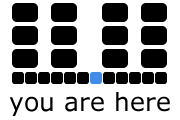Collaboration
by Jentery, Curtis, Matthew & Jamie
Collaboration from a “Standards in the Making” (SITM) perspective involves the collective efforts of humans and machines. Each of our writings describe this collaboration, whether between humans, machines, or humans and machines. In particular, our interests converged on the topic of the various affordances of metadata. Here, the work of metadata not only functions as a platform, but also functions socially. Metadata practices, Jentery writes, affect “how people feed back into navigation, produce new knowledge with metadata, and reconfigure public information.” Similarly, Jamie points to the potential for collaboration between Flickr users, where their efforts to “identify features that mark the spatial and temporal situation of an artifact . . . are encouraged by the project to add tags that facilitate new organizational schemas for search and retrieval and also contribute new information that may alter subsequent analyses.”
That metadata also functions socially means that it is further implicated in cultural formations. In his critique of the Flickr Commons, Curtis perhaps best articulates that collaboration in tagging systems is (and should be) a struggle. He writes,
“What was once a debate about an image, walled in by the logics of contemporary political correctness, now becomes a struggle to decide how black, American history is to be organized (and, quite literally, in whose name).”
Users leverage tags to appropriate specific cultural categories and labels, to make meaning out of the organization of artifacts. The notion of “implicit metadata” that Jentery discusses, following Doctorow, is illustrative here. In the “Rosie” image, users engaged in a conversation about the race of the individual in the photograph, and “a debate about metadata and its role in archiving and locating the Rosie image emerges.” Jentery continues to outline what a SITM perspective offers, to ask: “what everyday and technical, what implicit and explicit standards are fostering the production of descriptive and predictable metadata”? It is from within these collaborative moments around implicit metadata that standards emerge.
What are the implications for building collaboration between machines, particularly as volume becomes a central concern, as Jentery discusses? And as these collaborations are archived, Jamie further asks “about the “afterlife” of discourse [and] what constitutes a “finished” discourse? How do we document these collaborations in ways that mark our narrations as also “contingent, temporary fixes,” as Matt discusses?
